Can we mine our way out of the climate crisis?
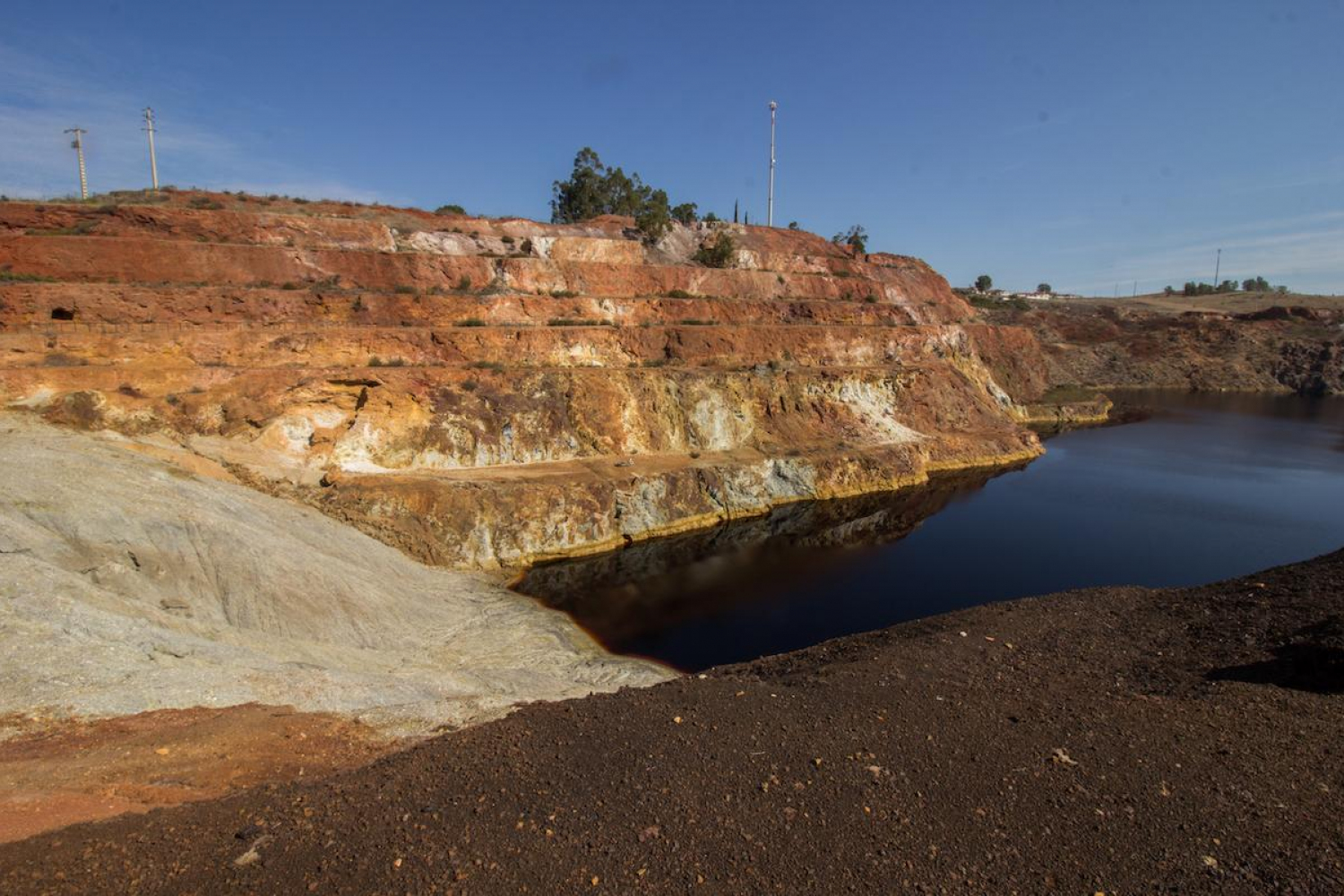
The Sao Domingo mine was closed in the 1960s and today serves as a tourist attraction in a Portuguese nature park.
© Charis Bastin
The EU is heavily dependent on imports of fossil fuels. The European Commission wants to get rid of these, but does not want to depend on other countries or continents for new raw materials. The solution is to mine as many raw materials as possible ourselves. But not every European citizen is in favour of this. ‘Local communities must have the right to say no’.
This article was translated by Kompreno, with support from DeepL. Original Source, published in December 2021.
‘What we do ourselves, we do better.’ It is a mantra that echoes in EU circles and in the mining industry, whenever the European ambitions for mining are met with criticism or questioning.
In order to be the first climate neutral continent to become a global leader by 2050, the European Union must make a major green shift. The energy and transport sectors, currently still too dependent on fossil fuels, must become renewable and electric. And for this, raw materials are needed, lots of them.
In September 2020, the EU presented its raw materials strategy. Although the green transition is often highlighted in it, the strategy is also of great economic and geopolitical importance for the Union. It aims to secure the supply of so-called ‘critical raw materials’ for the next decade. The Commission itself defines critical raw materials as ‘raw materials of high economic importance to the EU and which present high supply risks’.
And there are other issues that have caused additional concern, says Diego Marin of the European Environmental Bureau (EEB), a network of more than 140 environmental NGOs. In particular: ‘The tensions in trade relations between China and the United States, and the impact of the coronavirus on supply chains.’
That is why the Commission states that we should not replace one dependency, that of fossil fuel imports, with another dependency, that of other raw materials. For example, in the first half of 2021, the EU imported EUR 23.7 billion worth of energy per month, with Russia as the main supplier of gas.
China is already the main supplier of (processed) raw materials. 80% of global battery production is currently located in Asia, with 69% in China, according to the European Parliamentary Research Service (EPRS). Only 15% of that production is in the US and 4% in the EU.
Europe now depends on China for 44% of its raw material imports. Only 3 of the 30 critical raw materials come from the EU itself for more than half of their use.
Mining is a key pillar of the raw materials strategy. It should increase the primary supply of raw materials. From the Iberian Peninsula to Scandinavia and the Balkans, a number of mining projects are already under way across the Union. But in the places where the first mining projects are appearing, there is mainly concern about the long-term social and ecological impact.
A bad reputation
In Europe or elsewhere, mining does not have a very good reputation. A number of critical raw materials that Europe wants to mine itself come from places where mining is associated with serious problems.
With human rights violations, for example, or with a detrimental impact on public health, local biodiversity or water management, and with conflicts with small rural and indigenous communities. Think, for example, of cobalt mining in the Congo or lithium mining in South America.
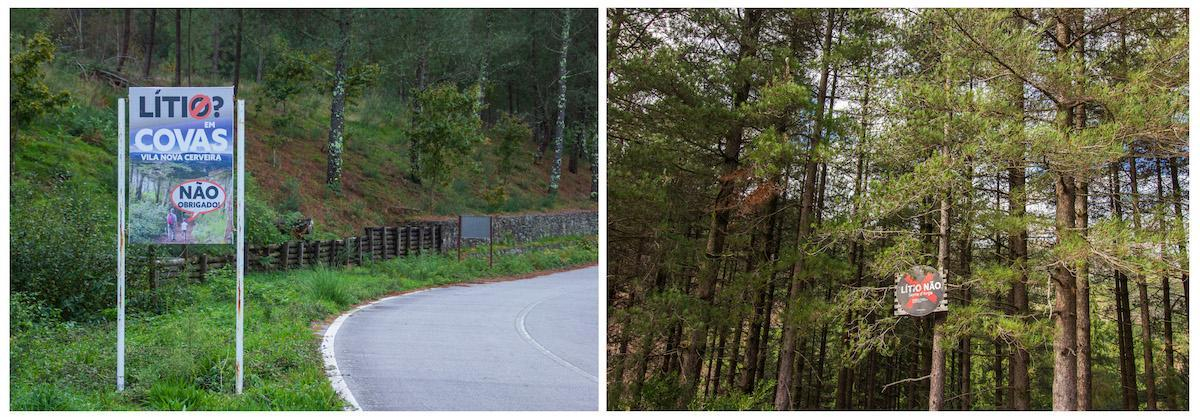
Local communities in portugal protest against lithium prospection.
© Charis Bastin
‘With the Green Deal, the EU wants to bring an industry to its own continent that is inherently energy-intensive and associated with environmental injustice.’
Diego Marin of the EEB questions the European Commission’s plans. ‘With the Green Deal, the EU wants to bring an industry to its own continent that is inherently energy-intensive and associated with environmental injustice. You see that a strong social conflict arises where mining is concerned.’
Marin refers to the violence that environmental and human rights activists increasingly face. According to the Transition Minerals Tracker, an initiative of the Business and Human Rights Resource Centre (BHRRC), 304 complaints are currently pending against 115 companies involved in the mining of lithium, cobalt, copper, manganese and nickel.
Violence, repression and harassment against environmental activists has reached a dismal low in recent years. In 2020 alone, there were 604 attacks, says BHRRC. 140 cases were related to mining, making it the most dangerous industry to protest against.
This violence can be deadly. Global Witness recorded 1939 murders of land and environmental defenders between 2002 and 2019. In 2020, 227 activists were killed, making it the most dangerous year ever for activists. The number of murders related to protests against the mining industry was 17. Only in protests against logging and dams were more activists killed.
The most strict legislation?
But not to worry, says the EU: the EU will do better. For example, the Commission says the EU has ‘a strong legislative framework that takes into account the prudent involvement of local stakeholders and high standards of environmental management.’
‘Nothing could be further from the truth’, geophysicist and hydrologist Steven H. Emerman told MEPs at a hearing in December 2021 in the European Parliament. This was organised by two parliamentary committees, to clarify the social-ecological impact of mining in the EU.
The hearing was organised as a result of complaints received by the Parliament. In eleven years time, 92 petitions were filed against mining projects in the EU. At the moment, 33 petitions are still pending.
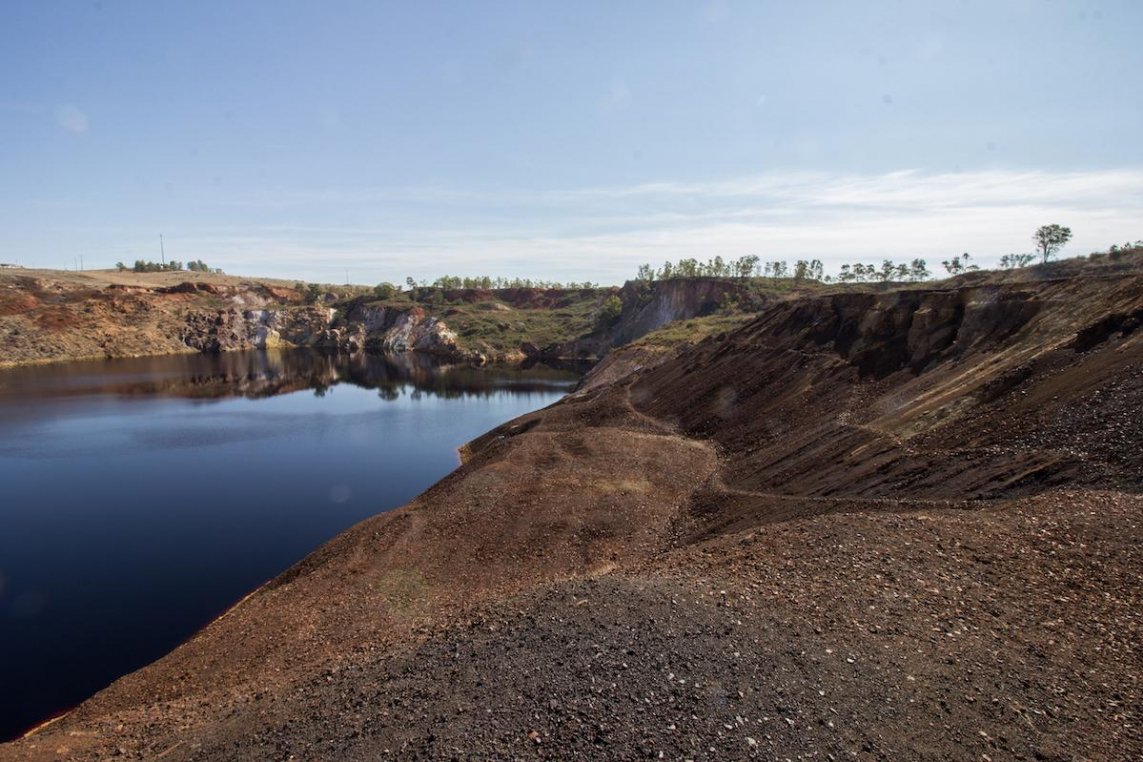
The old Sao Domingo mine still contains such large amounts of iron and sulphuric acid that there is a constant risk of soil and water pollution.
© Charis Bastin
There are global standards, but they are not or not structurally applied in the EU, Emerman explained during the hearing. Especially the safety of so-called tailing dams leaves much to be desired. These are the dams that must contain the waste produced by mining. ‘Such a dam, for a proposed copper mine in Galicia only 200 metres from a village, would not be allowed today in Brazil, Ecuador or China.’
A major problem, Emerman said, is the precise way in which the waste piles of stone and the waste water are contained. ‘In Spain, 99% of the waste dams are so-called upstream tailing dams, which are illegal in 4 Latin American countries.’ In such a dam, the dams are built on the stone waste heaps themselves, which increases the chance of instability and the likelihood of a breach.
And Spain is no exception within the EU, Emerman added, but the only European country to keep a database of such dams. In other words, for the rest of Europe, even the risks are still unknown.
‘In the plans for the Mina do Barosso, I also see such an upstream tailing dam’, Emerman continued. This mining project in northern Portugal, which MO* reported on earlier, met with fierce resistance from the local population.
‘Yet nowhere in the project proposal does the word ‘dam’ appear’, Emerman continued. ‘As a result, the necessary safety criteria were not taken into account. Any problems are dismissed in the environmental impact study as ‘not expected’. I call that reckless creativity.’
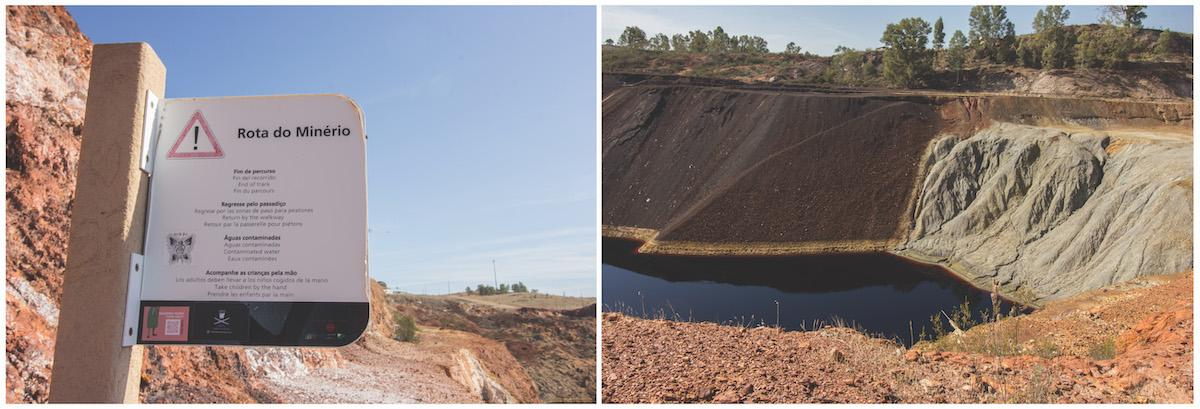
The Sao Domingo mine was closed in the 1960s and today serves as a tourist attraction in a Portuguese nature park.
© Charis Bastin
In both Spain and Portugal, however, the consequences of pollution from poor waste management are visible, fuelling fierce resistance to new mining projects. In Portugal at least 100 abandoned mines leave a dirty legacy. For decades, a debate has raged about who should clean up the pollution from uranium, zinc, tungsten and copper mines.
‘The elephant in the room, is the systematic lack of compliance and enforcement of existing legislation.’
A striking example is the Sao Domingo mine, an old copper mine in the south of Portugal, on the Spanish border. It was closed in the 1960s and today serves as a tourist attraction in a nature park. But the old wells contain such large amounts of iron and sulphuric acid that there is a constant risk of soil and water pollution.
‘The elephant in the room,’ Elena Solis, a Spanish lawyer and campaigner with Ecologistas en Acción, tells MO*, ‘is the systematic lack of compliance and enforcement of existing legislation.’
Solis lists the EU laws: ‘The Water Framework Directive, the Management of Waste from Extractive Industries Directive, Environmental Impact Assessment Directives, the Environmental Liability Directive, the Directive on the Conservation of Natural Habitats and of Wild Fauna and Flora, and the Directive on Free Access to Environmental Information. If these were strictly applied and adhered to, much of the damage we see today could be avoided.’
Solis also addressed the MPs in the December 2021 hearing. She criticised the fact that mining companies already penalised for environmental infringements have recently received new funding from the European Commission, through the Horizon-2020-programme. ‘Cobre Las Cruces, a large copper mine in Spain, has already been fined several times for illegally pumping up groundwater. Valoriza Mineria, another Spanish mining company, is currently in court for dumping acid mine waste in a nearby river.’
The Commission was misled by the mining lobby, says Solis. ‘It seems to have convinced the EU that the industry is a ‘champion’ of compliance. When in reality it often comes down to opportunism, contempt and criminality.’ Therefore, Solis argues, the question is not where, but whether we should do mining.
‘License to operate’ as a challenge
Mining is not the same as it used to be, it is said in the industry. For example, David Archer, (former) CEO of mining company Savannah Resources, told MO* in 2021 that it will use the ‘greenest and smartest mining practices’. Savannah Resources is the company that wants to open the contested Mina do Barroso in northern Portugal. (David Archer stepped down as CEO in July 2022, ed.)
‘The traditional narrative that mining companies are coming to overwhelm local communities is an old narrative’, said Archer. ‘It’s our job to make it clear that we will be responsible.’
Indeed, the industry has become smarter, says mining researcher William Sacher. Out of necessity, because social resistance to mining is relatively new. Today, social acceptance, or what in professional terms is called the Social License to Operate (SLO), is part of the start-up of a new mining project.
But this social acceptance has little to do with human rights or the involvement of local communities, the researcher emphasises, only with risk management for the company. ‘Resistance will have an impact on your profits, so this is about cost optimisation versus risk. Like investing in community development to eliminate resistance.’
‘Public opinion’ was also described as one of the challenges in the strategic review of Europe’s raw materials strategy, dated June 2021. The review states that ‘failing dams, chronic pollution and deadly accidents shape public opinion’ and that ‘transforming public opposition into passive tolerance requires sustained work’. And also that ‘PR campaigns, transparency, stakeholder dialogue and heritage building can help to create a positive public opinion’.
These are precisely the strategies that large companies use to obtain social acceptance, anthropologist Alexander Dunlap also pointed out to the European parliamentarians during the recent hearing.
‘I saw how politicians, city councils, police stations and schools were sponsored, and how museums, bars and restaurants were set up to celebrate mining.’
Dunlap investigated how mining company RWE in Germany tried to gain social acceptance for the expansion of its lignite mine at the expense of the Hambach forest. ‘I saw how politicians, city councils, police stations and schools were sponsored, and how museums, bars and restaurants were set up to celebrate mining.’
Social acceptance, Dunlap argues, is nothing more than a PR campaign aimed at the local community, with no regard for scientific facts about the negative effects of mining. ‘It comes down to convincing people to give up their environment, collective resources and income. The Social License to Operate is a weapon to control land and people, degrade ecosystems and pocket profits.’
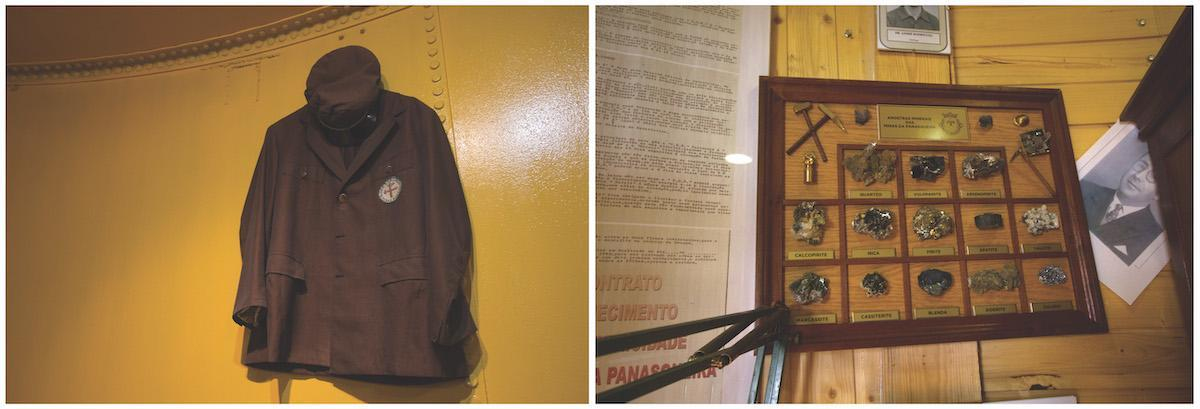
The museum of Minas da Panasqueira in Central Portugal. I saw how politicians, city councils, police stations and schools were sponsored, and how museums, bars and restaurants were set up to celebrate mining.’
© Charis Bastin
Is the EU taking its values of respect for human rights and environmental justice seriously? Then local communities should also have the right to say no to a mining project, is the criticism. Diego Marin of the EEB also thinks so. ‘The EU has an opportunity to put both values into practice: give local communities power and the right to say no as well, so that they are more on a level playing field with industry.’
But the EU further fuels mistrust. In recent years, it has funded initiatives such as MIREU, which should support mining companies and governments to achieve social acceptance.
Can the EU enforce duty of care for companies?
There is only a balance of power ‘when laws also lay down civil and criminal liability for damage’. That is what policy officer Natural Resources for Broederlijk Delen, Wies Willems, wrote earlier this year in a column for MO* about making the mining sector more sustainable.
The European Commission promised to work on a European directive for duty of care for companies this year. But the legislative proposal for this has already been postponed several times. New talks were to take place on 15 February 2022.
‘Europe’s attitude is contradictory’, Willems tells MO*. Because the United Nations has also been working since 2014 to turn non-binding guidelines on duty of care (UNGPs) into a binding treaty. ‘The European Commission has been taking a wait-and-see attitude in the UN negotiations for years’, Willems observes. ‘And the European directive is always postponed, under the influence of the powerful business lobbies.’
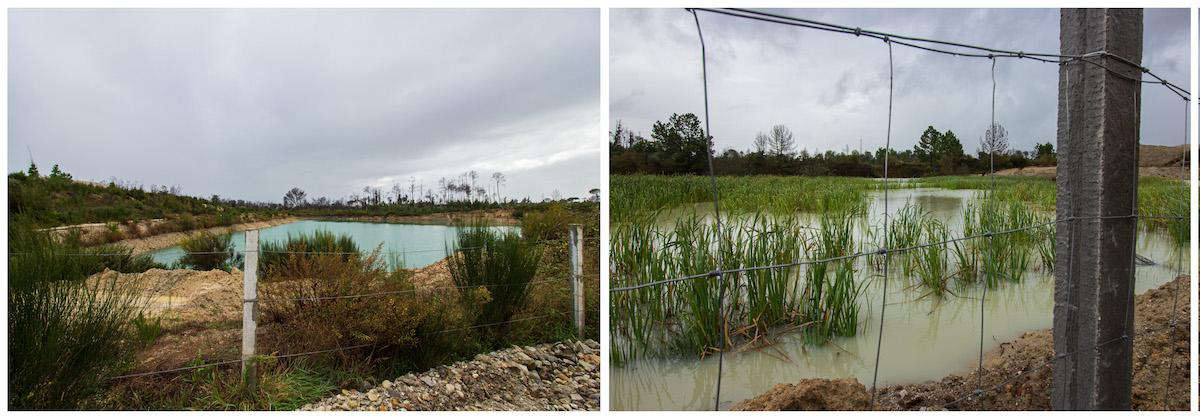
Water pits with mining waste in Central Portugal, where there might be possible lithium prospection.
© Charis Bastin
For the import of conflict minerals, the Conflict Minerals Regulation has existed since the beginning of 2021. This regulation obliges European companies to demonstrate that the raw materials they import are not linked to an armed conflict or to human rights violations, such as in Congo and Colombia.
But that is ‘too limited’, write several Belgian NGOs in the report Minerals for the energy transition. ‘Because this legislation does not cover companies that bring finished products or semi-finished products onto the market’, the NGOs write. Thus, raw materials from conflict areas, via China for example, can still indirectly end up on the European market. Moreover, the legislation says nothing about the environment and does not apply to energy minerals.
‘The EU does not act at all as a guardian of the existing treaties.’
One of the most important international frameworks that already exists is the EITI, which stands for Extractive Industries Transparency Initiative. This is intended to increase the financial transparency and accountability of the oil, gas and mining industries. It should help to manage the revenue generated by mining more responsibly. ‘But’, Willems writes, ‘transparency should not be an end stop. It does not provide an answer to social conflicts and the reality of planetary boundaries.’
The problem, says lawyer and campaigner Solis, is not only that some governments look the other way and that legislation is insufficient. ‘But also that the EU does not act at all as a guardian of the existing treaties.’
But the raw materials are needed
Most sceptics and critics of European raw materials policy realise that raw materials will be needed to make the transition. However, they argue, the climate should not be an excuse for extraction.
Of the 30 critical raw materials, only 6 are of strategic importance to the EU that are directly driven by the green transition. This was investigated by the Öko-Institut, a German environmental research institute, on behalf of Henrike Hahn, MEP for the Greens/European Free Alliance. Digitalisation, defence, aviation and the steel industry are other sectors driving the resource strategy.
‘We cannot simply put an inherently dirty industry in a European context and make it clean and sustainable’, says Marin. ‘The reality is more complex. 10% of global energy consumption comes from the mining industry, which contributes to 5 to 7% of global CO2 emissions.’
It is feared that this policy will lead to a major paradox: more energy will be needed to extract more minerals, which in turn will be needed to build more renewable energy infrastructure, part of which will be needed to provide the energy needed to extract, again, more minerals.
IMF researchers also estimate that rising prices due to increased demand for raw materials could even slow down the energy transition. Just as the pandemic had an effect on the demand, prices and supply of building materials.
‘Not growth, but sustainability must be the goal’, Marin states resolutely. ‘The current projections of demand for raw materials are all based on a growth model. We also need projections that include strategies aimed at managing demand. Such as the right to repair, eco-design, a fully-fledged circular economy and recycling. If you use less, you need less extraction and less energy.’
However, these alternatives to extraction cannot yet alleviate the need for raw materials in the short term, say the researchers from the Öko-Institut. But the EU can set the course for this today. For example, recycling is still not economically viable enough compared to mining extraction. Quotas on the minimum content of recycled materials in a new product could further stimulate this sector.
More efficient product development and standardised production processes should also make recycling easier in the future. Where exactly raw materials are located in a product and how they can be deconstructed are not yet subject to strict guidelines, which makes every discarded product different and therefore harder to recycle.
Europe already recycles a lot, the Research Service of the European Parliament knows, but not when it comes to critical raw materials. Only 1% of them are recycled.
‘Is mining necessary? Perhaps. But it should be the very last resort. There are alternatives, now we need the political will.’
With a Circular Economy Action Plan and concrete proposals to require minimum quotas of recycled lithium, nickel and cobalt in new batteries from 2030, the Commission is also showing ambition in this area. Recycling and the circular economy must provide a secondary supply of raw materials, in addition to mining.
Marin sees opportunities, but suggests reversing the ambitions. ‘Mining is the priority now. Choose the opposite: energy reduction in all possible ways. By shifting the framework to limiting overconsumption, a whole range of new possibilities are put on the table.’
‘Is mining necessary? Perhaps it is. Nobody should write it off 100%. But if it is done, it must be to the highest environmental standards and with the full consent of local communities. And even then, it should be the very last resort. There are alternatives, now we need the political will.’
This article was realised with the support of the Pascal Decroos Fund.
This article was translated by Kompreno, with support from DeepL. Original Source, published in December 2021.
Maak MO* mee mogelijk.
Word proMO* net als 2798 andere lezers en maak MO* mee mogelijk. Zo blijven al onze verhalen gratis online beschikbaar voor iédereen.
Meer verhalen
-
Report
-
Report
-
Report
-
Interview
-
Analysis
-
Report










 Oxfam België
Oxfam België Handicap International
Handicap International